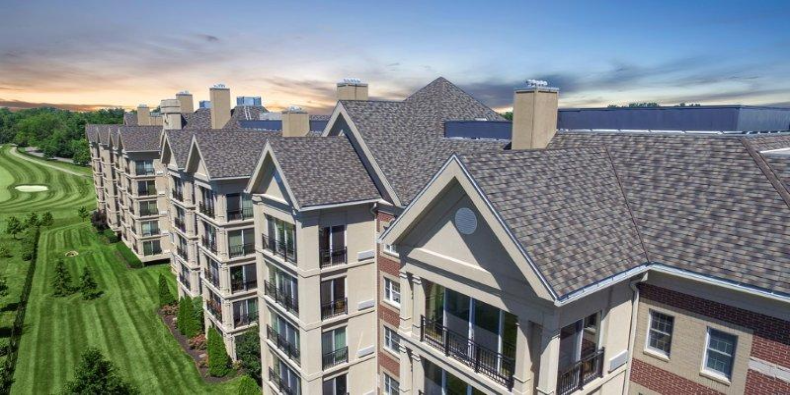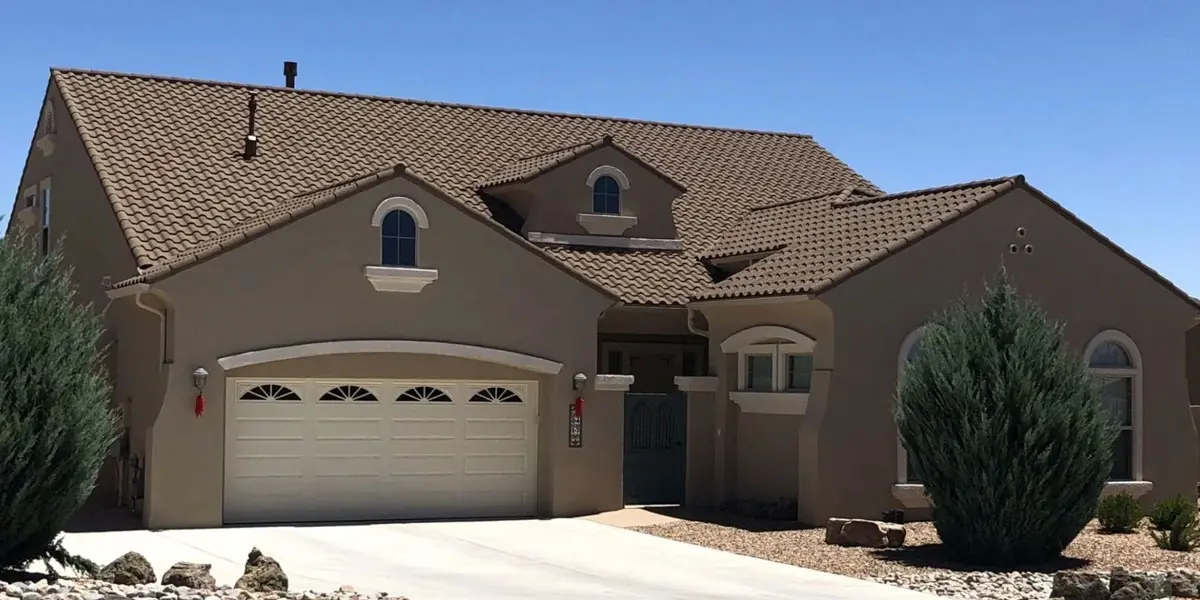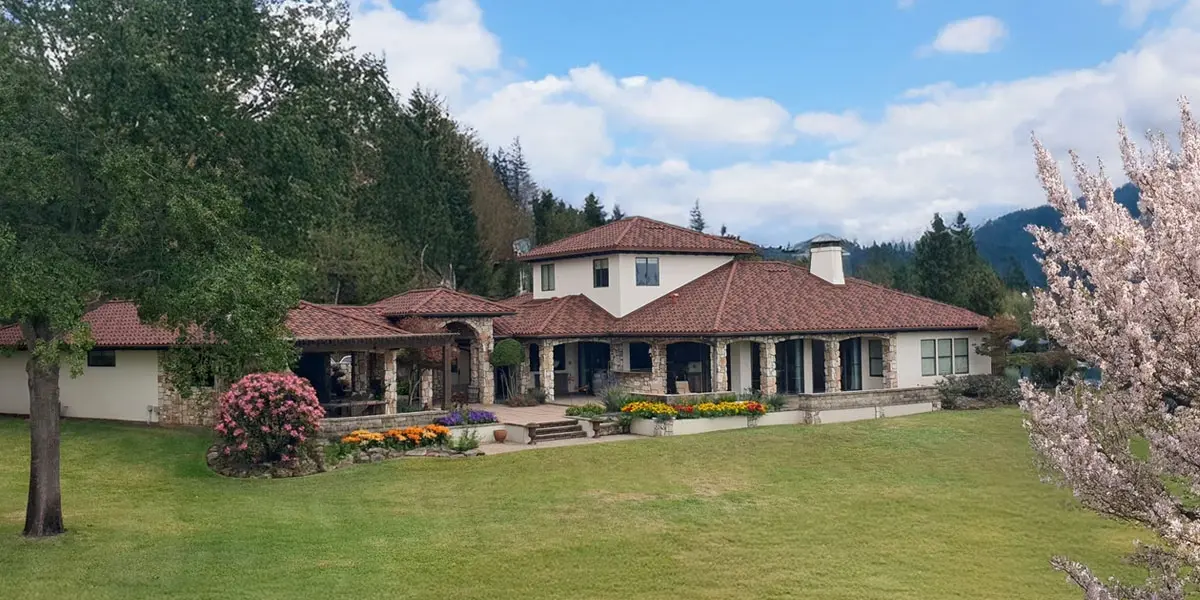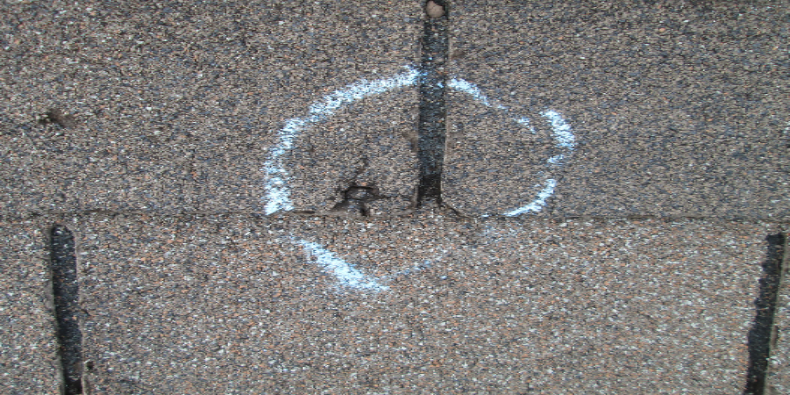Metal roofing is the second most popular roofing material in the United States–and for good reason. Metal roofs boast an impressive list of benefits and are one of the best roofing materials for durability, longevity, energy efficiency, sustainability and ROI.
In this guide, we’ll cover everything you need to know about metal roofing, including:
- History of metal roofing.
- Types of metal roofing.
- Benefits of metal roofing.
- How metal roofing compares to traditional roofing materials.
History of Metal Roofing
While metal roofing has recently surged in popularity amongst homeowners, it has dominated the industrial sector for centuries. Factories, barns, military barracks, warehouses and other industrial buildings have benefitted from the durability, longevity, high ROI and low-maintenance characteristics that only a metal roof can provide.
Historically, metal roofing wasn’t embraced by the residential sector as it was considered “too industrial looking” by most homeowners.
This changed when the Decraspray Company developed an emulsion coating made from road tar and stone chips during World War II. Designed to camouflage the highly reflective metal roofs of military buildings in wartime England, the stone-coating formula was developed to provide protection from German air raids. When the war was over, the stone coating had not only preserved the metal roofs, but the coating was practically impossible to remove. Decraspray saw the potential for stone-coated metal roofs as a residential roofing product and in 1957, the first stone-coated metal roof was introduced.
>>>Related Resource: Read the full history of stone-coated metal roofing here.
Types of Metal Roofing
Metal roofing is a fairly broad term for roofing products composed of various types of metal.
Common types of metal roofing include:
The main difference between these types of metal roofing is appearance. As mentioned above, most metal roofing has an industrial look and feel, with stone-coated metal roofing offering the most design versatility to suit nearly any residential, commercial or industrial property.
Metal roofing is known as one of the most durable, longest lasting and energy-efficient roofing materials on the market.
>>>Related Resource: Read 10 Things You Need to Know About Metal Roofing.
Benefits of Metal Roofing
Metal roofs provide protection against nearly anything Mother Nature has to offer.
- Hail: The highest rating for hail impact.
- High winds: The ability to withstand hurricane-force winds.
- Fire: The highest rating for fire protection.
>>>Related Resource: Why Metal Roofing is the Best Choice for Any Climate.
The benefits of metal roofing don’t stop there. The longevity, energy efficiency and high ROI of metal roofing are just a few of the impressive benefits that only metal roofing can provide.
- A metal roof lasts two to three times longer than traditional roofing materials such as asphalt, tile and wood.
- Metal roofs are extremely energy-efficient and can reduce cooling costs by up to 25%.
- Metal roofs are favored by many insurance carriers. In fact, a metal roof can lower homeowners’ insurance premiums by up to 35%. (Check with your local insurance carrier for discounts).
- Metal roofs have an extremely high ROI and can increase home value by up to 6%.
>>>Related Resource: Do metal roofs increase home value?
Metal Roofing vs. Traditional Roofing Materials
As mentioned, metal roofing is the second most popular roofing material in the U.S. As homeowner awareness continues to grow, so too does the market share of metal roofing. Here’s how metal roofing stacks up when compared to traditional roofing materials.
Asphalt Shingles
Asphalt shingle roofs are currently the most popular roofing material in the U.S. At their peak popularity, asphalt shingles were used on more than 70% of homes. The reason for the popularity of asphalt shingles is due to cost. Asphalt shingles are the cheapest roofing material on the market, however, homeowners have become painfully aware that, when it comes to roofing, cheaper isn’t always better. Asphalt shingles have significant shortcomings when it comes to longevity, energy efficiency and sustainability.
Lifespan: Traditional asphalt shingles need to be replaced as frequently as every 12 years, even sooner in regions that are prone to hail, tornados, hurricanes and harsh weather.
Energy Efficiency: Asphalt shingles absorb heat like a sponge and radiate heat down into the home below, even after the sun has set. When it comes to energy efficiency, asphalt shingles are one of the worst-performing roofing materials.
Sustainability: Since asphalt shingles are petroleum-based, they are often too toxic to recycle. Since asphalt roofs need to be replaced so frequently, they wind up contributing 11-13 million tons of waste to landfills every year. That’s equivalent to 3,068 Olympic-size swimming pools filled with old asphalt shingles.
Metal shingle roofing products, such as DECRA Shingle XD, provide similar aesthetics of asphalt shingles, but with the durability and longevity that only metal can provide.

Clay or Concrete Tiles
Many architectural themes rely on the look of Spanish or Mediterranean tile roofs. While tile is a critical design element, it is also one of the heaviest, most fragile and high-maintenance roofing materials on the market. Clay tile roofs are so fragile that just walking on them for routine maintenance can cause damage, so you can only imagine what would happen to a clay tile roof in regions prone to hail, hurricanes, tornadoes, high winds and storm debris. Clay and concrete tile roofs are also extremely heavy.
Why does the weight of the roof matter? A building bearing an excessively heavy roof load is considered top-heavy and prone to side forces. Heavy roofing materials pile excessive weight up at the top of the home, adding to the roof load and the construction materials required to support it. Clay tiles can absorb up to 15% of their weight in moisture, adding weight stress to the supporting roof structure. Here’s how tile weighs in compared to other roofing materials:
- Metal Roofing: Weigh up to 1.6 lbs. per square foot
- Wood Shingles/Shake: Weigh up to 4.5 lbs. per square foot
- Asphalt Shingles: Weigh up to 5 lbs. per square foot
- Clay or Concrete Tile: Weigh up to 10 lbs. per square foot
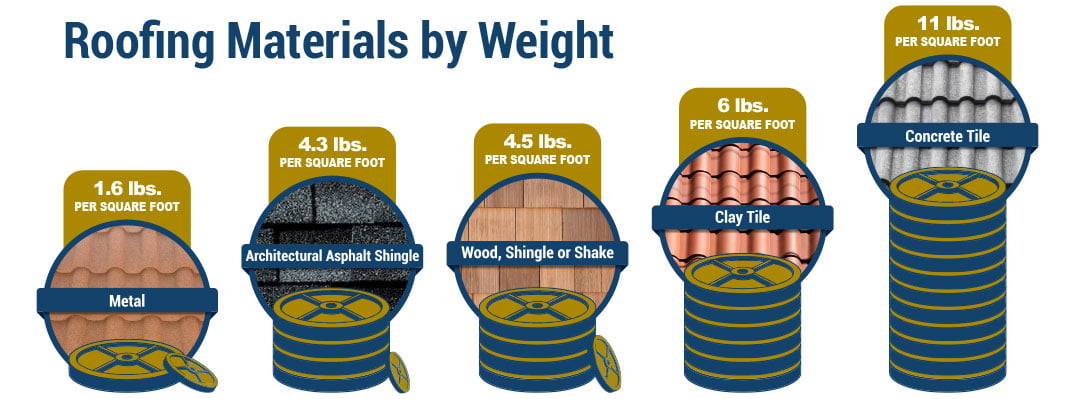
Metal tile roofing products provide the classic look of tile without sacrificing performance.

Wood Shingles or Wood Shake
Wood roofs were extremely popular until the early 1900s when more durable roofing materials entered the market. Wood shingles and wood shake roofs are plagued with issues that require ongoing maintenance and repairs, including:
- Fading to a gray after brief exposure to the elements.
- Cupping and splitting, making wood roofs extremely susceptible to wind uplift.
- Wood can foster mold, requiring extra chemical treatments and cleaning.
- Wood roofs are extremely flammable and require flame retardants and other treatments.
Fortunately, metal shake roofing products provide the rustic appeal of wood with the industrial strength of metal.

About DECRA Metal Roofing
DECRA Metal Roofing products are engineered to bridge the gap between industrial durability and architectural beauty.
As the original stone-coated metal roofing manufacturer, DECRA roofs have withstood the test of time since 1957. Manufactured at our state-of-the-art facility in Corona, California, DECRA roofs are tested above and beyond what is required to ensure the quality that DECRA is known for is present in each and every panel we make.
Want to see and feel the DECRA difference? Click here to order a free sample.
Editor’s Note: This blog was originally published in July of 2020 and has been updated with current information.

